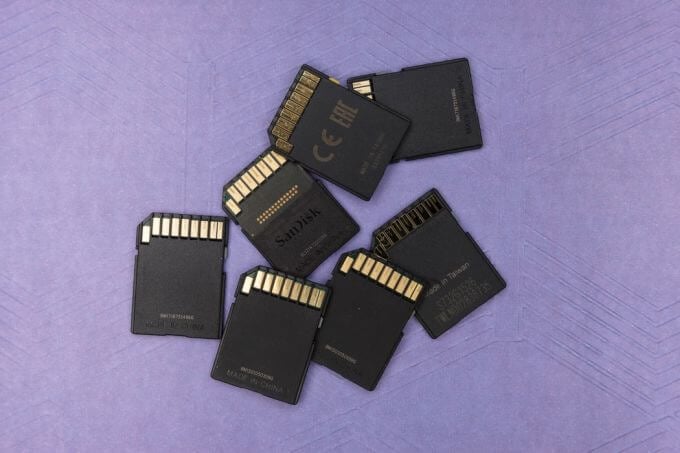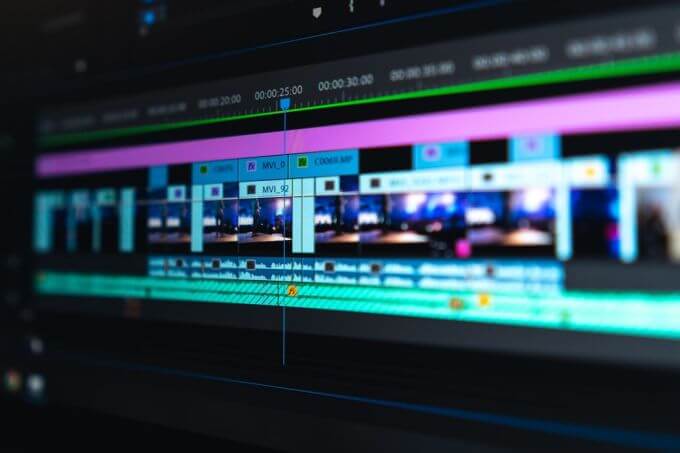There are some tricks nearly every video editor follows in order to keep things efficient and simple. If you’re a beginning video editor, you’ll want to start trying them out for yourself. Eventually, it’ll become second nature and your editing process will begin to flow. This is definitely not an exhaustive list of things you should keep in mind while editing, but they are some of the most important. Learning these video editing tips will help you build on your knowledge and allow you to eventually find your own personal style of video editing.
Make Backups Of Your Video
Arguably the most important thing you can do for your project is to make multiple backups. Making this a habit will save you so much time and effort in the long run. Whether your computer unexpectedly crashes or your editing program starts having errors, with a backup you’ll have a point to go back to. How many backups should you make? Honestly, there isn’t a “too much” when it comes to this. Ideally, though, you should make at least three backups of your project. Also make sure these are saved in different forms or locations. For example, one on your hard drive, one on a SD, and one on a USB. With this method, if one backup gets somehow lost or corrupted, you’ll always have one somewhere else where it’ll be safe.
Organize Your Media
One of the most frustrating things to occur when video editing is not being able to find a certain clip or piece of media. Also, editing programs will need to be able to find the files you’re using, so if something gets moved for whatever reason it will be a chore to try and track them down again. That’s why it’s incredibly important to make organized and clean folders to keep your files. Before you edit is ideally when you should organize your clips. How you organize them is completely up to you, and depends on what type of project you’re editing. If you’re not sure how you should organize your files, a good rule of thumb is to do it by chronological order of when the clips were shot. The goal is to make it quick and easy to find something whenever you need it.
Take Long Video Clips
Sometimes you may not have control of this, but if you’re the one shooting your video as well as editing it, this video editing tip will make for a much better end product. When editing video clips, you’ll want to have a lot of material to work with. This makes it much easier to piece things together in a way that flows well. If you’re shooting the video, a good video editing tip is to have the camera going for at least 30 seconds before the action starts and 30 seconds after it ends. That way you’ll get everything, and when you’re editing the clips it will help to keep things from getting choppy.
Choose The Right Editing Program
Depending on what types of projects you’re trying to produce, the video editing program you use could either help or hurt you. Sometimes, editing programs don’t have enough tools or capabilities to do what is needed. If you’re trying to edit things where you want to add a lot of effects and have full creative control, such as short films, long YouTube videos, music videos, or advertisements, a more professional program would be what you’d need. This would include programs like Adobe Premiere Pro, Final Cut Pro, or DaVinci Resolve. However, if you’re editing video that doesn’t involve many changes, you should use something more simple so you don’t get overwhelmed and so you’re not spending lots of money for features you don’t really need. For projects like home videos, short or instructional YouTube videos, or slideshows, things like iMovie, Windows Movie Maker, PowerDirector, or most free editing software are fine to use. Also pay attention to what each software has to offer. Adobe Premiere is good if you’re a beginning video editor as it is both powerful and easy to get a hang of. DaVinci Resolve might be harder to pick up, but it has a wide range of color grading options and features, and is free to use. Doing some research on editing programs before you choose one will help you immensely in the long run.
Don’t Overuse Effects
With all the options available for adding interesting video effects or transitions, it may be tempting to put lots of them into your project. However, too many effects can actually be more detrimental than anything. Using a lot of effects can become distracting to a viewer. If you use too many, it might come off as tacky or overwhelming. It’s more important to use effects only when they will give a meaningful impact to your video. As far as transitions go, it’s usually better if they aren’t overly flashy. Moving from clip to clip should go smoothly, and overusing transition effects will take focus away from what you’re actually trying to get across. Just remember that when it comes to effects, less is more.
Start With a Rough Cut
If you’re editing a good amount of footage, it’s important to get yourself into an efficient workflow. A good way to do this is to make a preliminary rough cut of your entire video. This usually involves going through your clips, and finding the ones you’re sure you want to use. After you’ve determined that, you can place them in your program’s timeline in chronological order. At this point, though, you aren’t going to want to trim the clips or add any sort of transitions or effects. The point of the rough cut is to get a general idea of how the video will play out and to flesh out the order of the scenes. Once you’ve done this, you can easily go through your timeline and do more specific cuts and edits.




